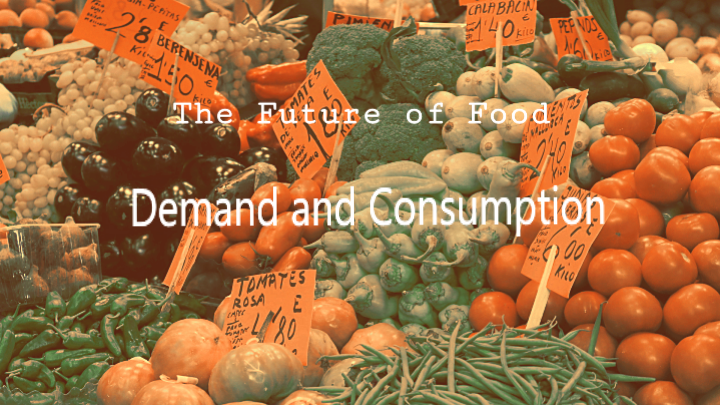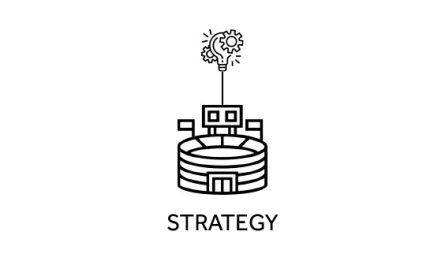Can we as consumers change the way food is being produced only by our choice on what we buy? Can we influence the food market by our decisions on what to eat in such a way that we shift the status quo into a sustainable one?
On my last 3 posts I went over our contemporary food system, how could it look like if we are to re-shape it into a more sustainable one, and which new technologies could be revolutionizing it.
Now I want to focus more on the receiving end of food being produced. Yes, consumption. One of the sustainable development goals deals with this matter – SDG12 responsible consumption and production. So, what does responsible consumption mean?
In this context the UN uses “sustainable” as a synonym to “responsible” which actually makes sense.
Just to be on the same page, here is a suitable definition that fits best to my purpose:
Sustainable consumption is the use of products and services in a way that minimizes the impact on the environment, so that human needs can be met not only in the present but also for future generations. When sustainable consumption is practiced, resources are used wisely and waste products and pollution are minimized. The main way this is achieved is by doing more and better with less (Gillapsy, R. 2020).
But, why would this be important? you may ask. Well, just to state a few facts:
- While substantial environmental impacts from food occur in the production phase (agriculture, food processing), households influence these impacts through their dietary choices and habits. This consequently affects the environment through food-related energy consumption and waste generation.
- Land degradation, declining soil fertility, unsustainable water use, overfishing and marine environment degradation are all lessening the ability of the natural resource base to supply food.
- The food sector accounts for around 30 per cent of the world’s total energy consumption and accounts for around 22 per cent of total Greenhouse Gas emissions.
So, how can I help as a consumer? There are two main ways to help according to the UN:
- Reducing your waste and
- Being thoughtful about what you buy and choosing a sustainable option whenever possible.
Reducing our waste can be done in many ways, from ensuring you don’t throw away food to reducing your consumption of plastic—one of the main pollutants of the ocean. Making informed purchases about what we’re buying also helps. If you can buy from sustainable and local sources, buy seasonal products, buy less dairy products and less meat, you can make a difference as well as exercising pressure on businesses to adopt sustainable practices.
Look, I’m not telling you to become a vegetarian or a vegan overnight. But it would definitely be great for our environment and our food systems in general if we did so.
Year after year we are seeing at least small shifts on consumer behavior regarding conscious consumption based on sustainability.
Research from the New York University Center for Sustainable Business (CSB) shows that consumers are buying more sustainable goods.
CSB analyzed purchasing data on the sales of over 71,000 products in 36 different categories of consumer package goods. After combing through the data, CSB found 50% of sales growth among consumer packaged goods (CPG) between 2013 and 2018 came from sustainability-marketed products, despite the fact such goods account for just under 17% of the market. According to CSB’s data, reported early in 2019, sales of sustainability-marketed products grew 5.6 times faster than conventionally-marketed products, when measured by gross merchandise value. In over 90% of the individual product categories, the sustainability-marketed products outperformed their conventional counterparts. (Reints, 2019)
According to Tastewise’s Food and Beverage Sustainability Trends in 2020, a company focused on AI statistics and food data, 23% more American consumers make food and beverage decisions based on sustainability considerations than a year ago. This number was also expected to grow in the upcoming months of 2020 pre-corona crisis.
On a 2018 Global Web Index survey, it was found that half of digital consumers say environmental concerns influence their purchasing decisions. About 61% of millennials would pay more for eco-friendly products, 58% of Generation Z would do the same.
As millennials continue to rise in their careers and members of Generation Z enter the workforce in large numbers, businesses are attempting to shift their focus to more sustainable and environmentally friendly products and services.
It’s clear young generations are influencing how businesses produce and market themselves, and the trend will only continue as Generation Z gains purchasing and political power in the future.
The increases on consumer demand for more sustainable products such as food are encouraging and inspiring,
and we should build on that, but that doesn’t really reflect the realities in which millions of people in the world live in. In developing countries, the reality of poverty alongside with undernourishment is persistent. It is not always a matter of choice. As much as I would want to get on the topic of politics, income inequality and poverty around the globe in detail, I will have to draw a line here for focus sake. Don’t get me started on the romantic illusions of our global system of free market capitalism.
Still, the last report of the FAO, the Food and Agriculture Organization of the United Nations, highlights and addresses some of the problems that are interlinked with poverty and income inequality, and how could these have a causal connection with sustainable food demand:
- Sustainable agricultural practices can raise farm profitability and/or labour opportunities in agricultural sectors. This would contribute to a more equitable distribution of income, which may in turn be critical to improve food security and nutrition.
- Managing consumer demand through awareness raising on environmentally sustainable diets and proper regulations such as supervising and discouraging food waste and enforcing more efficient food pricing can help contain the expansion of agricultural sectors.
- Food prices should be “right” and contain the costs associated with their production and consumption along the entire food value chain such as land degradation, water consumption or GHG emissions among others, which are often not accounted for. This can help limit the growth of food demand and reduce food losses and waste, while contributing to the preservation of natural resources and the improvement of nutrition. On the other hand, higher food prices may hinder poor people’s ability to buy food, and this is where governmental institutions might have to help a little with targeted and efficient strategies to raise their purchasing power.
Consumer demand cannot deliver sustainable foods alone and by itself without any political and economic reforms to ensure that all people are able to eat healthy foods that do not destroy the natural resources we depend on. But it might be huge a driver moving forward and it will definitely put pressure on businesses to adopt more transparent and sustainable agricultural practices.
Aniel, M. (n.d.). 4 insights into 2020’s sustainable food and beverage landscape » Tastewise. Tastewise Blog.
Food and Agriculture Organization of the United Nations (FAO). (2018). The future of food and agriculture Alternative pathways to 2050.
Gillaspy, R. (n.d.). Sustainable Consumption: Definition and Complexities – Video & Lesson Transcript | Study.com.
Isenhour, C. (2012). Can Consumer Demand Deliver Sustainable Food?: Recent Research in Sustainable Consumption Policy & Practice Can Consumer Demand Deliver?
Reints, R. (2019). Consumers Say They Want More Sustainable Products. Now They Have the Receipts to Prove It. Fortune.
UNIBusiness Editor. (2020). The consumer’s impact on sustainability and the economy | University of Northern Iowa College of Business Administration. UNIBusiness
United Nations. (2017a). RESPONSIBLE CONSUMPTION & PRODUCTION: WHY IT MATTERS? Sustainable Development Goals – Goal 12: Ensure Sustainable Consumption and Production Patterns.
United Nations. (2017b). Sustainable consumption and production. Sustainable Development Goals – Goal 12: Ensure Sustainable Consumption and Production Patterns.




Great post, Ivan! As customers, I think we keep forgetting how much influence we can have – if we collectively stop buying products with palm oil in them, for instance, corporations will feel the repercussions in their pockets, which is the only way they’ll adapt!
Thank you! I believe so too, there is still hope